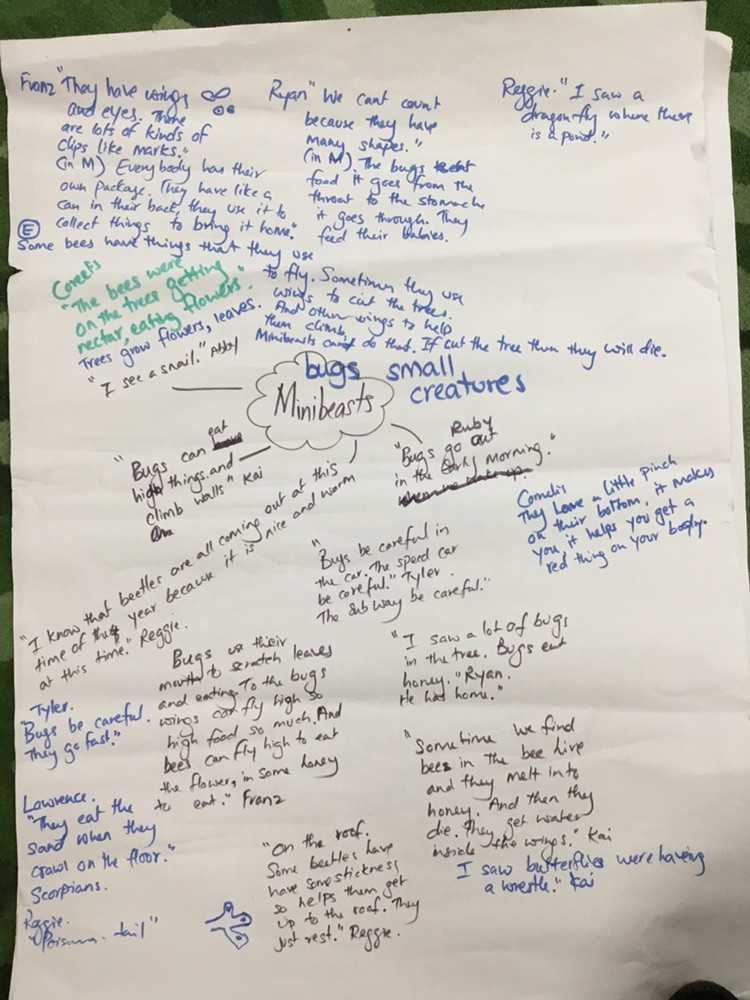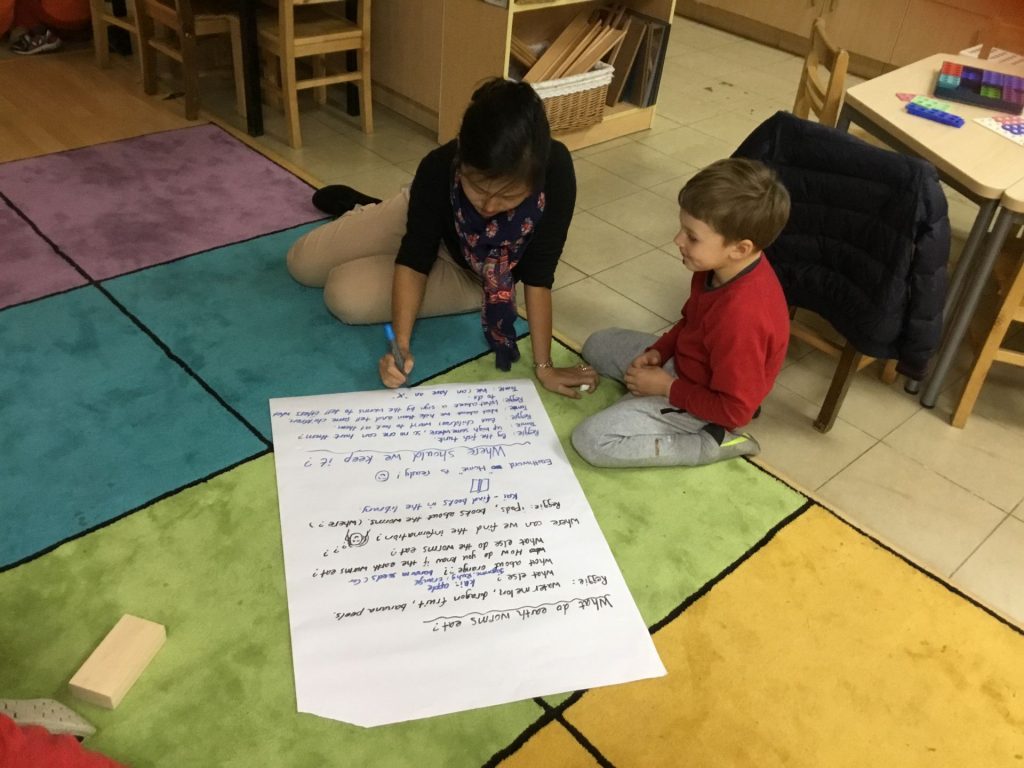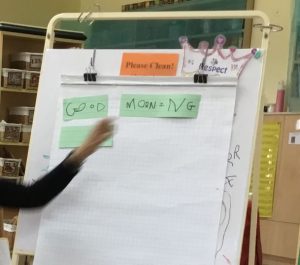The Brainstorm
What do you know about bugs?
We sat down together to talk about what we know about bugs, minibeasts and little creatures.
- Abby “I see a snail.”
- Kai “Bugs can eat high things. And climb walls.”
- Reggie “I know that beetles are all coming out at this time of the year because it is nice and warm at this time.”
- Franz “Bugs use their mouth to scratch leaves and eating. To the bugs wings can fly high, so high to food, so much [they can fly high to get their food]. And bees can fly high to eat the flower, in some honey to eat.”
- Reggie “O the roof, some beetles have some stickens [sticky feet] so it helps them to get up to the roof. They just rest.”
- Tyler “Bugs be careful in the car. The speed car be careful. The subway be careful [you need to be careful about the bug flying into the car when you are speeding on the highway].
- Ryan “I saw a lot of bugs in the tree. Bugs eat honey. He has a home.”
- Kai “Sometimes we find bees in the beehive and they melt into honey. And then they die. They get water inside their wings.”
- Ruby “Bugs go outside in the early morning.”
- Cornelis “The bees were on the trees getting nectar, eating flowers. Trees grow flowers, leaves.”
- Kai “I saw butterflies having a wrestle.”
- Tyler “Bugs be careful, they go fast.”
- Lawrence [in Mandarin] “They eat the sand when they crawl on the floor. Scorpions!”
- Reggie “They have a poisonous tail!”
- Franz “They have wings and eyes. There are lots of kinds clips, like marks [they have patterns and marks].” [in Mandarin] Everyone has their own package. They have like a can in their back, they use it to collect things to bring it home.”
- Ryan “We can’t count because they have many shapes.” [in Mandarin] The bugs eat food, it goes from their throat to their stomach, it goes through. They feed their babies.”
- Franz “Some bees have things that they use to fly. Sometimes they use wings to fly. Sometimes they use wings to cut the trees. And other wings to help them climb. Minibeasts can’t do that. If you cut the tree then they will die.”
- Cornelis “They have a little pinch [stinger] on their bottom, it makes you get a red thing on your body.”
- Reggie “I saw a dragonfly where there is a pond.”
The conversations were about snails, bees, scorpions and dragonflies.
The main concepts shard by students were about:
- food
- they eat – nectar,
- transport food
- feed their offspring
- provide food for humans – honey
- movement
- fly
- climb walls
- crawl
- homes
- ponds
- beehive
- characteristics
- eyes
- tails
- wings
- suckers at the end of feet
- digestive system
- adaptations
- poisons
- sharp teeth
- patterns
- to transport food
- lifestyle due to
- climate and weather changes
- day and night
- seasons
- behaviours
- fighting among species
- safety
- while traveling
- bites and stings




















 Ruby had a banana peel. She wanted to throw it away. Ms. Hannah explained that worms like banana peels.
Ruby had a banana peel. She wanted to throw it away. Ms. Hannah explained that worms like banana peels.






 Franz “We need a swimming pool because if the city don’t have a swimming pool, then they will not be able to swim.”
Franz “We need a swimming pool because if the city don’t have a swimming pool, then they will not be able to swim.”











































